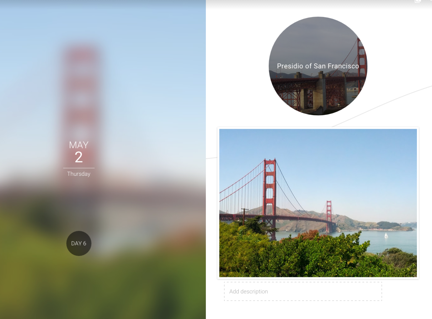Google just announced a new photo service – now independent of Google+. The service is called Google Photos (confusing since Apple also calls their service Photos).
The service might be understood as consisting of three elements:
- software (iOS, android and desktop) to upload photos
- cloud image processing that attempts to identify what is in a photo
- storage capacity – unlimited as long as the images and video are converted to Photo’s constraints (16 megapixel and 1080p)
The clincher for many users will be that the service costs you nothing.
Google does not require that you do all of the work in categorizing your photos and it is the machine learning capabilities of Google that generates some of the most intriguing results. The system will attempt to determine who is in a photo, where the photo was taken, when it was taken, and the category to which a photo should be assigned (video, panorama, etc.). The system is not perfect but good enough to amaze.
Some examples:
1) Photos attempts to identify the individuals in photos. One capability I found amazing was the ability to track individuals as they age.
2) Google creates interesting photo stories from your images. This capability is not dependent on tags or annotations you have added.
3) One categorization method is based on location. Images do not have to be geotagged to be located (note most camera phones do not include GPS data in the exif).
4) Photos makes it easy to share groupings of photos as a URL – example.
It is worth exploring Google Photos from your desktop and your mobile device. The perspective is not exactly the same. For example, the zoom in and out methods of exploring your collection are not available on the desktop.
I was originally interested in Google Photos as a way to duplicate my Flickr account. When I have some time I may attempt to compare the features of these two services. I do see some differences but with Google Photos available at no cost, I see nothing wrong with using Photos as a backup. I see Apple as the loser in this situation.
![]()




